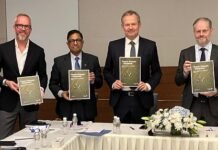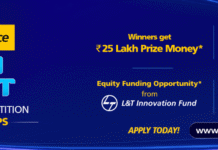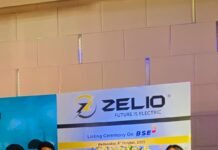New Delhi, Delhi, India | 13th February 2020: In a joint workshop conducted on ‘Digital Radio Vision for India’, by Xperi Corporation, India Cellular & Electronics Association supported by RMS (SG), the parties presented their outlook for the transition of the Radio from an analogue to a digital medium. The workshop was presided by the Chief Guest, Mr. R.S. Sharma, Chairman, Telecom Regulatory Authority of India (TRAI) with Mr. Shashi S. Vempati, CEO, Prasar Bharati as the Guest of Honour.

While countries across the world have been transitioning their mass media from analogue to digital over the past 20 years, in India, Radio broadcasting has remained analogue inspite of radio listening being extremely popular, thereby, enjoying the status of a mass entertainment and social impact medium.
The last change that happened was the advent of FM but it is still a poor cousin to internet and TV. It has been estimated that over 80% of listeners use the FM radio feature in mobile handsets largely as an entertainment source on their mobile phone.
This becomes the underlying reason for any technology change in Radio such as the digital radio to be of importance in the mobile handset space.

Speaking on the occasion, Mr. Ramashish Ray, Founder of Retail Management Services, a Mobile Ecosystem Enabler and the company responsible for evangelizing the digital radio concept in mobility to India said, “It’s encouraging that the Indian Govt has outlined a clear vision for digital radio and it would be really exciting to be part of the first Digital Radio mobile phone story like the first FM phone was. We are happy to have worked on mobile phone chipset level integration and reference designs which can enable this at India specific prices with mass deployment in India. This will be a key enabler to the ecosystem.”
The HD Radio system supports multiple audio programmes on a single transmission frequency. This is more effective than current analogue radio which provides only 1 audio programme per channel. These additional audio channels can be utilised for multi-language programming and local content. Best of all, listeners with an HD Radio receiver can continue to listen to their favourite analogue stations besides digital content free for listeners.
The system supports multimedia information, providing synchronized text and images with the audio programme without using any cellular data for an enhanced experience. HD Radio system also supports digital emergency alerting and notifications that can be instrumental in providing the public with resilient notification and actionable information (audio, text, images) during times of public emergency and network outages.
Radio broadcasting represents a cost-efficient system for transmitting information (currently audio) to millions of listeners simultaneously. Radio’s “one-to-many” business model is the most effective point-to-multipoint transmission scheme available. The cost of content delivery is the same whether you reach one thousand listeners or one million listeners. Worldwide, daily radio listening represents over 60% of consumer media consumption surpassing TV and content streaming in many markets. In India, the increase radio broadcasting has resulted in an increase in radio listening, and is growing year-over-year. In his parting comments, Mr. Ray added, “We at RMS, are very charged up and excited to take the radio listening to the level it truly deserves to be. Imagine how multi channel can lead to large choices for various regional and cultural content at the same time or getting alerts on your mobile phone of your favorite radio show! Possibilities are infinite. It is a disruption waiting to happen!”






